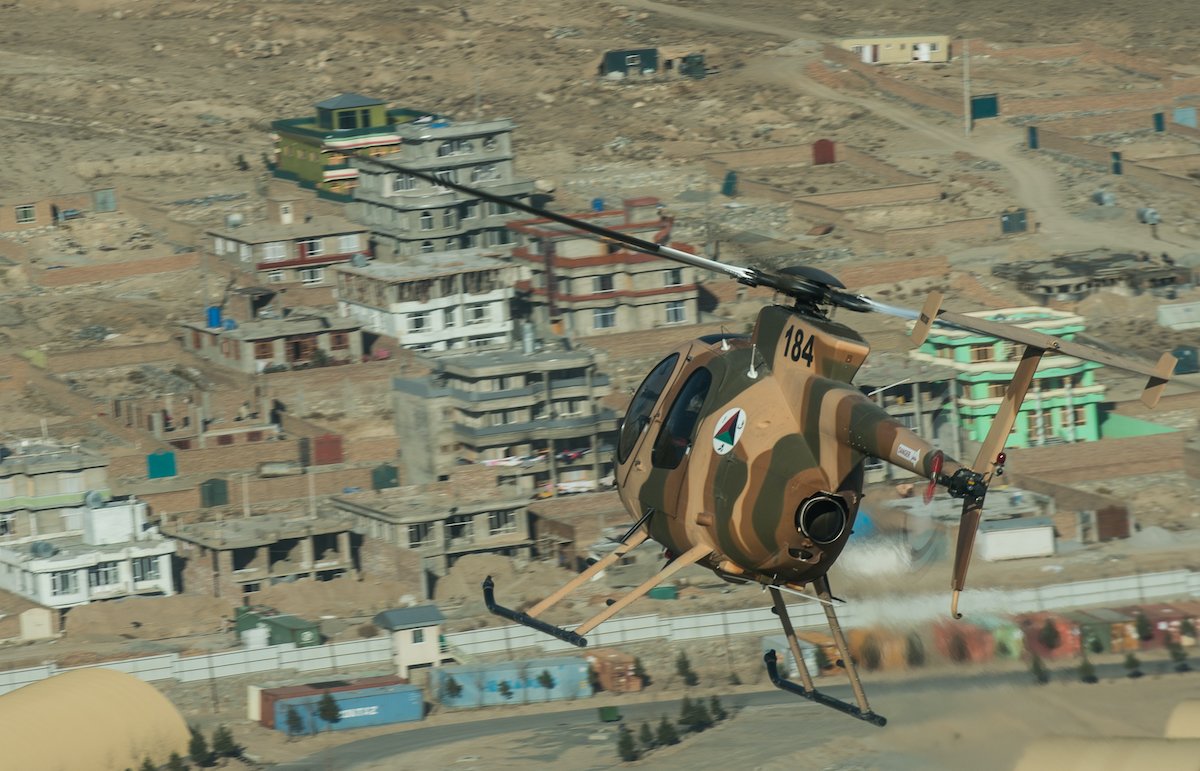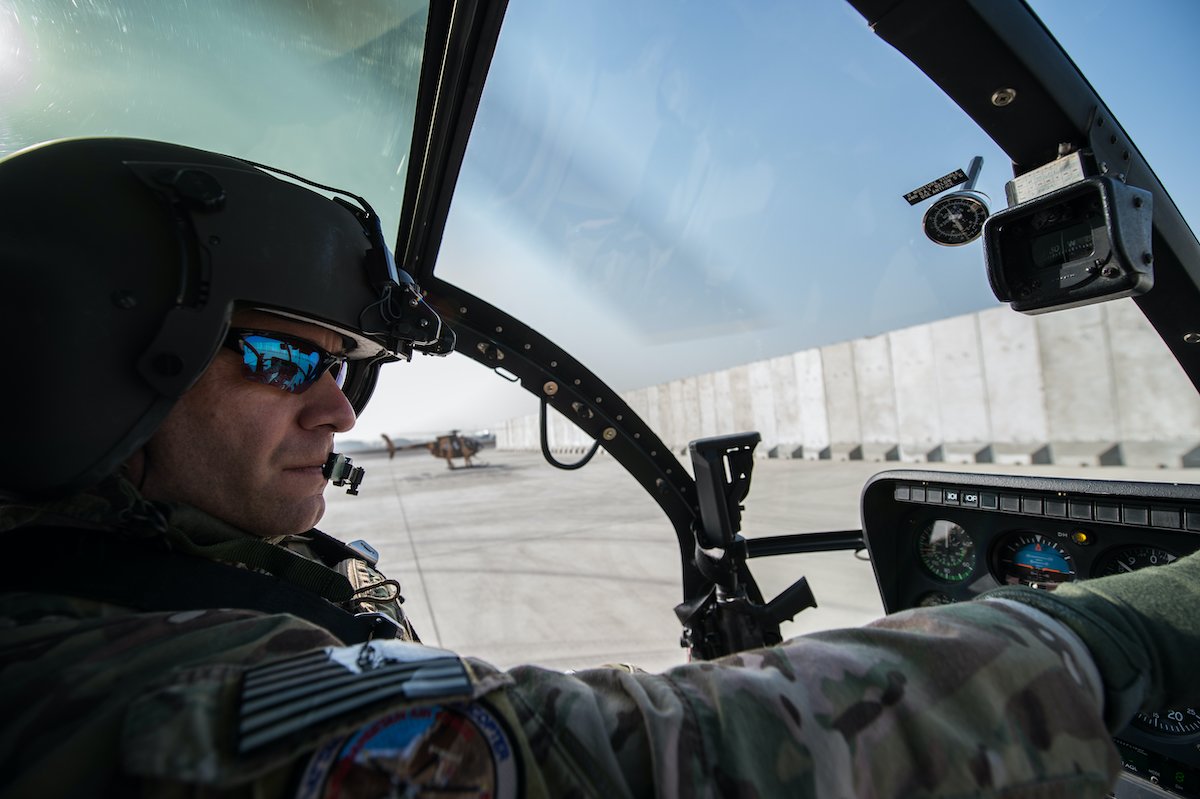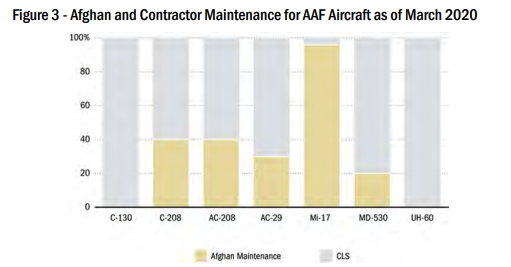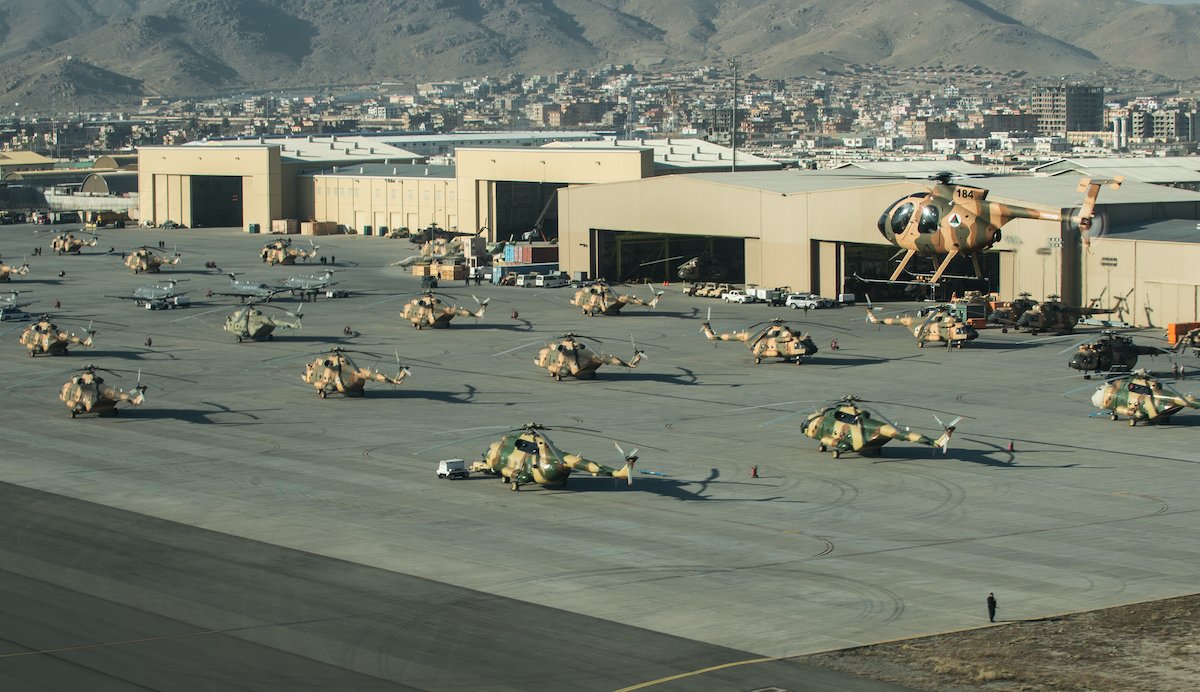
An Afghan Air Force MD 530F Cayuse Warrior flies over Kabul, Afghanistan, Dec. 6, 2014. US Air Force photo by Staff Sgt. Perry Aston.
The Pentagon was warned last January — months before the US began its withdrawal from Afghanistan — that the Afghan Air Force would quickly collapse without US support. An inspector general report declassified Tuesday, Jan. 18, but prepared a year ago, warned that the Afghan Air Force and its Special Mission Wing lacked the trained personnel and the recruiting pipeline necessary to be a self-sufficient force as America began to pull out of the 20-year war.
“Without continued assistance and clear focus on the development of all levels and positions of Afghanistan’s air forces, the resources, capability, and sustainment of the AAF and SMW may be at risk,” the report said. “The potential absence of both military advisors and contractors before the AAF and SMW are able to staff, manage, fund, or maintain their forces puts at risk the entire U.S. investment in the Afghan air forces.”
The Office of the Special Inspector General for Afghanistan Reconstruction spent a year assessing the Afghan air forces to determine whether the military branch was capable of sustaining itself. It discovered that not only did the AAF and SMW face a myriad of personnel and training issues, but that the fighting force heavily relied on US advisers and contractors to function.

The report also noted that the US spent a total of $8.5 billion trying to build up the Afghan air forces over the course of the war’s second decade.
“Since at least 2007, U.S. and Coalition forces have focused on the development of the Afghan air forces,” the report found. “However, the actual personnel strength of both the AAF and SMW has consistently fallen short of authorized personnel levels. The Afghan air forces and their advisors have focused on training pilots and maintainers, and have not focused on the support positions that make up a majority of air force personnel.”
It was not even clear, the report said, that all of the necessary pilots and maintenance personnel were in place. “DOD cannot verify that Afghan air forces personnel, such as pilots and maintainers, are in jobs that utilize their unique training, even though DOD provides financial incentives to personnel in such positions.”

The report’s warnings are direct, leaving little room for interpretation, and the document was in the hands of at least five US and partner agencies long before the pullout began, including the Department of Defense, NATO Special Operations Component Command-Afghanistan and Combined Security Transition Command-Afghanistan.
The agencies that reviewed the SIGAR report all agreed that a mitigation plan needed to be quickly drafted and implemented.

The deal brokered between the US and the Taliban required contractors critical in the day-to-day operations of the Afghan air forces to leave the country as well. SIGAR identified the need to find replacements for those contractors as soon as possible. Failure to do so, the IG wrote, would set up the AAF for failure when the Taliban were granted the freedom to roam.
A final version of the report was turned in to the Pentagon in January of 2021, roughly the same period during which the Trump administration reduced US forces to 2,500 troops, although almost 18,000 contractors remained in the country. When the Taliban reached Kabul on Aug. 15, members of the AAF did not respond effectively, Reuters recently reported. Some soldiers attempted to jump on helicopters before takeoff, with some even drawing their weapons on pilots, in a last-ditch effort to flee. afghan air force collapse
Read Next:

Dustin Jones is a former senior staff writer for Coffee or Die Magazine covering military and intelligence news. Jones served four years in the Marine Corps with tours to Iraq and Afghanistan. He studied journalism at the University of Colorado and Columbia University. He has worked as a reporter in Southwest Montana and at NPR. A New Hampshire native, Dustin currently resides in Southern California.
BRCC and Bad Moon Print Press team up for an exclusive, limited-edition T-shirt design!
BRCC partners with Team Room Design for an exclusive T-shirt release!
Thirty Seconds Out has partnered with BRCC for an exclusive shirt design invoking the God of Winter.
Lucas O'Hara of Grizzly Forge has teamed up with BRCC for a badass, exclusive Shirt Club T-shirt design featuring his most popular knife and tiomahawk.
Coffee or Die sits down with one of the graphic designers behind Black Rifle Coffee's signature look and vibe.
Biden will award the Medal of Honor to a Vietnam War Army helicopter pilot who risked his life to save a reconnaissance team from almost certain death.
Ever wonder how much Jack Mandaville would f*ck sh*t up if he went back in time? The American Revolution didn't even see him coming.
A nearly 200-year-old West Point time capsule that at first appeared to yield little more than dust contains hidden treasure, the US Military Academy said.












